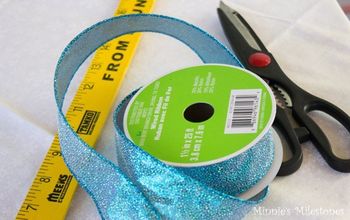What is the best time of year to prune a pear tree?
Related Discussions
GNATS - How to get rid of them?
Somehow my house and garden got tiny gnats that killed my fuchsia plant and fly everywhere. I have tried ALL the Web recommendations - soap and oil dishes, sand in th... See more
Marigolds growing! Should I pinch the buds?
My marigold plants are growing. I heard that pinching the buds until Autumn will allow them to grow without killing the plant. Is this true?
Growing garlic
Growing our first garlic, should we wait until the leaves are drying out before we pick it? Husband picked first one today along with our first potatoes.
How to keep mice out of your garden?
Hi everyone, I have mice in my garden destroying my vegetables and I have also noticed them in the barn and shed. Please can someone tell me how to prevent them from ... See more
What's the best flower/plant to grow in Texas?
I know that opinions vary, but what's your opinion?!I have great luck w Rosemary plants. Green all year long.
When is best time to prune a Globe Willow Tree
I want to walk under trees. these start about waist high. we live in NM
How do I stop tree stump from growing?
I have a gnarly old tree stump that has continued to grow from the trunk. My question is how do I stop it from sprouting all the way up the trunk. I break them off r... See more




We live in an area with a lot of pear orchards. They prune the trees in late winter, not too long before the buds start pushing, because they want maximum peat production. If you just have one or a few in your yard that are overgrown, you can prune out dead wood and shape them most any time. Just know if you cut them back too much you might have limited pear production this year.
The best time to prune is in the months ending with an R. September, October, November, December. By trimming during these months you will not have to worry about cutting off fruit buds.
I have meet many people that wait until spring to trim their fruit trees and then complain about not having any fruit.
You have probably heard that it is best to wait until the leaves fall off so you can see the structure of the tree clearly.
It does help, but isn't totally necessary. It helps on very thick trees to be able to locate crossover branches for removal, etc.
https://www.youtube.com/watch?v=qU3CENlgXlI
Pruning a pear tree begins in late winter before the buds begin to swell. Earlier pruning may encourage excessive vegetative growth and suckering in spring and summer. It also increases the chances of winter injury to the pruning sites. Limit spring and summer pruning to light thinning, and try to avoid trimming pear trees after midsummer. Pear tree pruning also begins at planting time. Cut back young, unbranched trees 33 to 36 inches above the ground to encourage good branching. If your new tree has plenty of branches, remove those that are less than 18 inches from the ground and those with crotches of less than 60 degrees.As a young pear tree grows, the main stem of the plant should always be taller than the surrounding branches. Pear tree branches naturally grow upright, but the branches spread as it begins to bear fruit. The weight of the fruit pulls the branch down into a more horizontal position. You can help this process by pulling the branch down and tying it to a stake in the ground with twine. Pad the twine that encircles the branch to avoid damage. If you can’t achieve an angle of at least 60 degrees between the branch and the trunk of the tree, then remove the branch. Pruning and training to improve the spread of the branches increases the amount of sunlight that reaches the center of the tree. Your tree will produce fruit sooner and in greater quantities as a result. Keeping the canopy of the tree open makes it easier for sprays to reach every part of the tree. It also allows good air circulation around the branches, and this helps prevent diseases. Pruning wounds in older trees provide an entry point for fire blight, which is a devastating disease that can kill a tree. Limit pruning of mature trees in areas where fire blight is a problem. Use as few cuts as possible to remove damage and thin the canopy. Remove suckers that grow from the base of the tree or in the crotches as they appear.